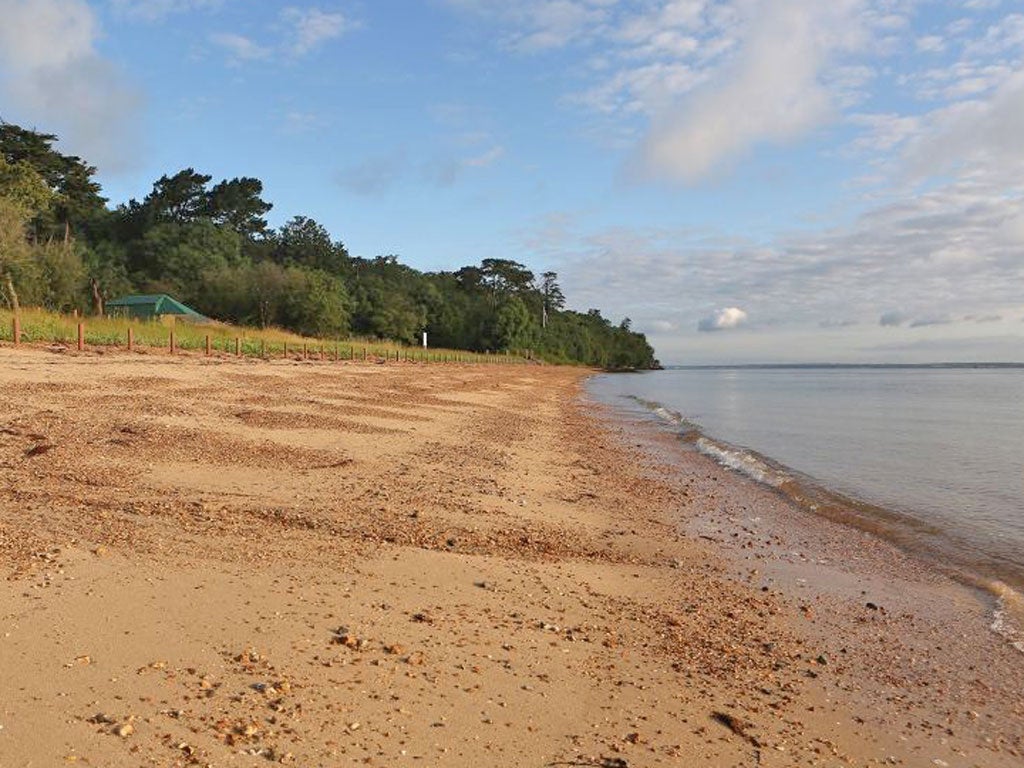Victoria's secret retreat from the burden of being the monarch
Queen Victoria's private beach, where she fell in love with the outdoors, is to be opened to the public. Jack Watkins reports

Your support helps us to tell the story
From reproductive rights to climate change to Big Tech, The Independent is on the ground when the story is developing. Whether it's investigating the financials of Elon Musk's pro-Trump PAC or producing our latest documentary, 'The A Word', which shines a light on the American women fighting for reproductive rights, we know how important it is to parse out the facts from the messaging.
At such a critical moment in US history, we need reporters on the ground. Your donation allows us to keep sending journalists to speak to both sides of the story.
The Independent is trusted by Americans across the entire political spectrum. And unlike many other quality news outlets, we choose not to lock Americans out of our reporting and analysis with paywalls. We believe quality journalism should be available to everyone, paid for by those who can afford it.
Your support makes all the difference.The image of Queen Victoria as a mordant, po-faced monarch is to undergo something of a sea change this month as the private beach at her seaside retreat of Osborne House, Isle of Wight, opens to the public for the first time.
The Queen's journals are full of happy references to time spent on or near the beach, where the children, including Bertie (later Edward VII), learned to swim and the monarch could spend time away from the burden of responsibility.
"They really loved it here," said English Heritage historian Dr Andrew Hann. "We know from her journals that the children were brought down from the house to play here every day, and the queen, who enjoyed walking or riding around the estate, would often join them for a stroll, or to gather seas shells."
The idyllic spot, which reminded Prince Albert of the Bay of Naples, was a deciding factor in the royal couple's decision to build the house on the island in 1845. The beach remained in use when Osborne House became an officers' convalescent home in the early 20th century, but afterwards fell into neglect. English Heritage took on the property in 1986, and the opening is part of its long-term scheme to restore and re-emphasise the estate's origins as a royal family home.
The original wooden bathing hut, from which the queen would emerge resplendent in a voluminous bathing costume, is being returned to the beach, newly restored. As well as admiring the views, which inspired the queen's illustrations, visitors will be able to watch or participate in a range of Victorian-style beach entertainments and games, such as Punch and Judy shows, quoits and skittles.
Simon Turley, chief executive of English Heritage, said that Victoria was: "Fixed in many people's minds as the 'Grandmother of Europe', who spent most of her reign in mourning for her husband. Opening her beach at Osborne lets us show another side to her – this was a queen who collected seas shells with her children, who sketched the changing sea, and who swam sometimes twice a day. Osborne was her seaside retreat."
The Queen's bathing machine was unusually ornate, with a front verandah and curtains which would conceal her until she had entered the water. The interior had a changing room and a plumbed-in WC. The royal offspring, meanwhile, were taught how to swim in a "floating bath", specially designed by Albert, and moored off the beach. It consisted of two pontoons with a wooden grating suspended between, which could be lowered or raised, according to the proficiency of the swimmer.
Evenings would sometimes feature fishing trips – they would be rowed out to be escorted by the local fishermen. In one journal entry, Victoria triumphantly records: "We got 39 whiting perch, of which I caught 10."
The beach had a landing pier and was where many eminent guests, among them the French emperor Napoleon III, had their first sight of Osborne House, through trees and shrubs specially laid out to provide tantalizing glimpses along the valley footpath. The Queen continued to visit the beach after Albert died.
In subsequent years, the bathing machine was used as a hen coop, and the beach was damaged when it was used for Army training during the Second World War. However, neglect of the bay meant it has also became a wildlife haven, including a colony of red squirrels. It contains a rare strip of vegetated shingle, and eel grass growing in the shallow waters provides an important habitat for seahorses .
The original wooden bathing hut, from which the Queen would emerge, is being returned to the beach
21 June 1846 "We drove down to the sea in our charabancs… by the beautiful new road laid out by Albert, which goes through the wood and winds down gradually to the sea. The view is beautiful."
30 June 1846 "Albert went back to the beach again later and bathed Bertie in the sea – a great event. He was extremely good and proud of his performance."
30 July 1847 "Afterwards drove down to the beach with my maids – went into the bathing machine where I undressed and bathed in the sea (for the first time in my life).
A very nice bathing woman attended me. I thought it delightful till I put my head under water."
16 August 1855 "Every day, every year, this dear sweet spot seems more lovely."
Join our commenting forum
Join thought-provoking conversations, follow other Independent readers and see their replies
Comments